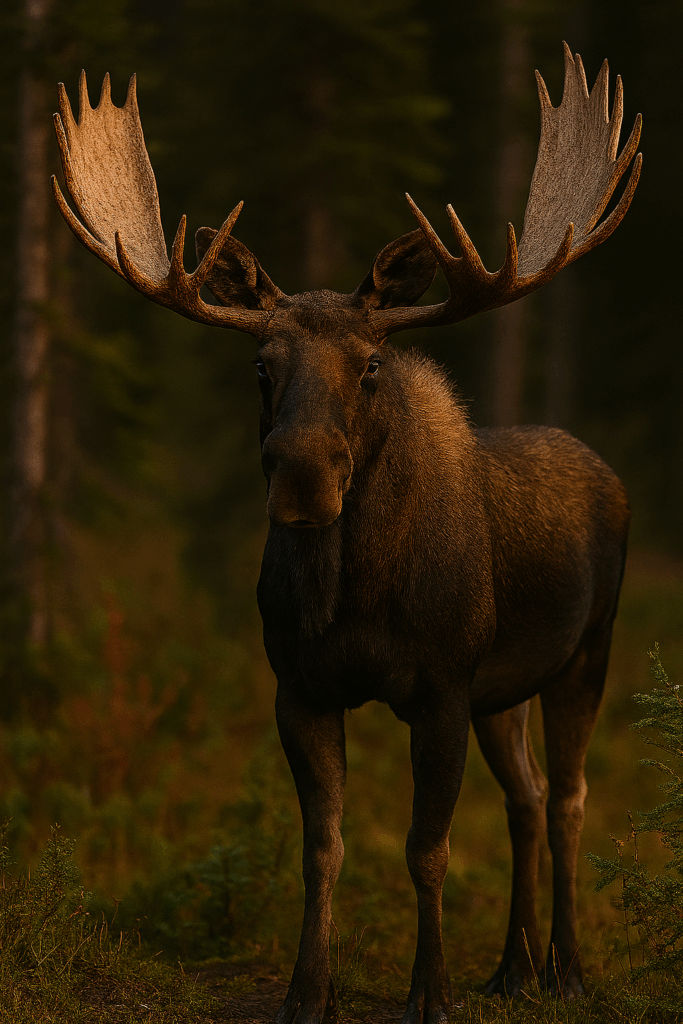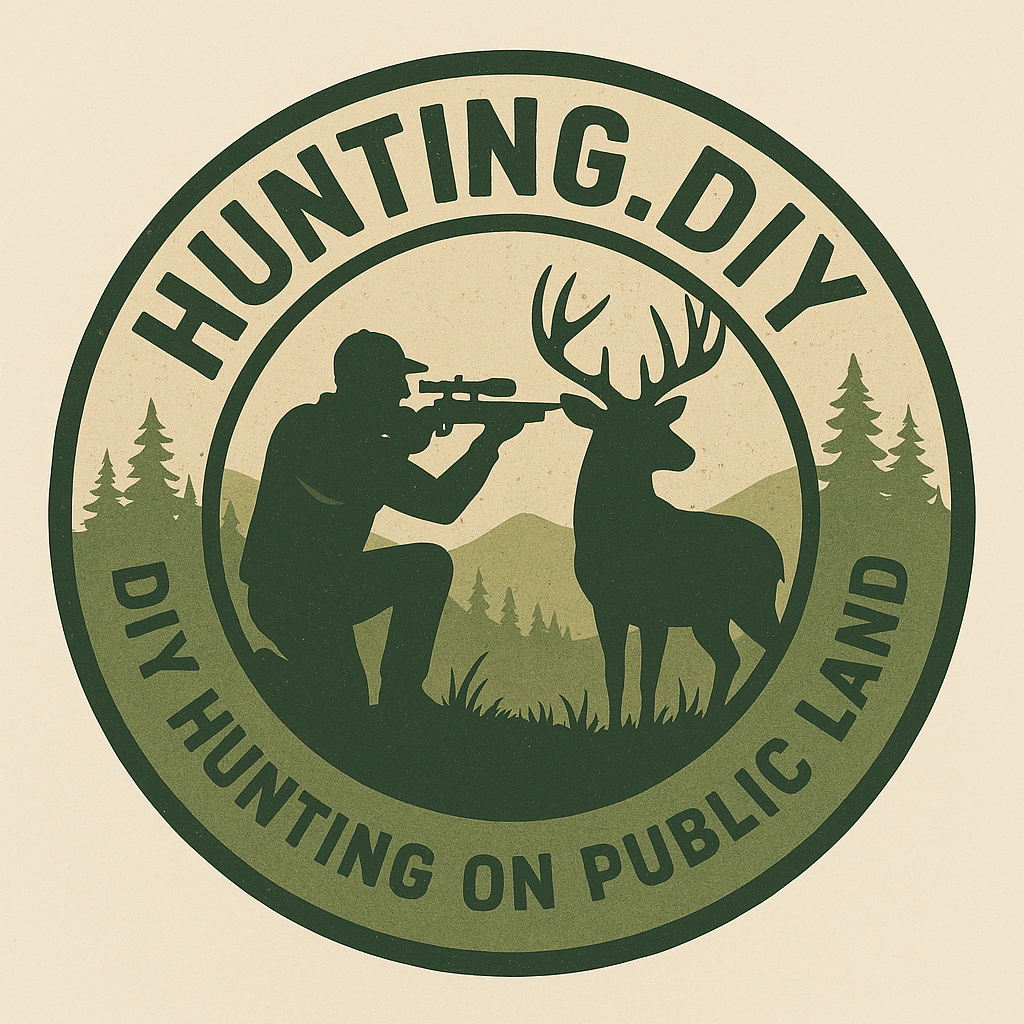Moose DIY Moose Hunting Guide (2025)
DIY moose hunting on public land demands guts, grit, and a dash of stubbornness. This guide slams you with straight talk—no outfitters, no cushy lodge stays—just you, your gear, and the wild. You’ll learn everything from spotting droppings in knee-deep bogs to shouldering a trophy bull.

Species Classification
Moose (Alces alces) reign as the heavyweight champs of deer relatives—they’re part of the Cervidae family, just like elk and mule deer. But don’t let that make you think they’re a pushover. These giants stand apart as the largest deer species on Earth. Their unique genus, Alces, sets them in a league of their own.
Male moose, called bulls, flaunt that massive, flattened antler rack every fall. Females, or cows, rock a more refined silhouette without antlers but still pack muscle under all that hair. Yearlings and calves trail behind their moms in a classic mother-child duo, itching to learn the moves of the marshland.
Physical Description
Picture a hulking beast: shoulder height can top six and a half feet, and weight often busts 1,200 pounds for a prime bull. Their dark chocolate to nearly black coats repel water as rain and snow bounce off coarse guard hairs. Beneath lies thick underfur that locks in body heat on bone-chilling mornings.
Long, drooping noses and that dewlap “bell” under the throat give moose a prehistoric vibe. Legs tower on stilts to vault streams and step through swampy peat. Bulls sport palmate (palm-shaped) antlers that span up to six feet wide—nature’s crown, shedding each spring and regrowing every summer.
Distribution and Habitat
Moose fans public land in boreal and mixed forests across northern North America: Alaska, Canada, and the northern contiguous U.S. states. In the lower 48, main haunts include Maine, Minnesota, Michigan’s Upper Peninsula, and parts of Montana and Wyoming. Look for them where willow and aspen mingle with watery habitats.
They dig wetlands, river corridors, and bogs because those zones feed them and mask their scent. Young trees and shrubs near stagnant water are moose salad bars. In winter, deep snow drives them to lower elevations where browse remains reachable.
Season Dates and Regulations
Moose seasons shrink to a narrow window—usually late September through early October—matching antler velvet drop and cow readiness. States and provinces parcel out limited tags via preference point draws and lotteries. You can’t just stroll into the woods with a moose license in your pocket.
Each jurisdiction sets strict limits: antler-points minimum, bull-only or cow-only tags, and specific hunt zones. Freeze the deadlines for applying; missing a draw date means sitting out for a year. Read every regulation pamphlet from your state wildlife agency—ignorance doesn’t cut it here.
Best Hunting States/Regions
Maine’s North Woods deliver dense hardwood swamps where bulls—and seekers—challenge snow and mud. Minnesota’s Superior National Forest holds healthy moose numbers but tests your backcountry persistence. Michigan’s U.P. blends cedar swamps with remote logging roads for stalks at first light.
In the Rockies, Wyoming’s high-country stretches feature scattered populations, but bull racks rival your wildest trophy dreams. Alaska—with guided hunts dominating—also offers some public-land opportunities in limited areas. Wherever you go, expect a draw system and strict tag quotas.
Hunting Equipment: Gun and Ammo
For rifles, nothing less than a .30-06 or .300 Win Mag will do—moose hide is thick, and heart-lung shots demand serious knockdown. Put at least 150 grains up front with controlled-expansion bullets designed for maximum weight retention. Practice steady offhand and prone shooting to settle nerves before crunch time.
Archers need 70- to 80-pound draw weights with broadheads engineered for deep penetration. At realistic moose ranges—100 yards or less—you must punch through bone and thick muscle. Always carry a quality scope, stout sling, and reliable boots that grip soggy bog floors.
Hunting Methods and Techniques
Spot-and-stalk rules the roost: glass distant feeding flats at dawn, then circle in with wind in your favor. Moose noses prey on poor wind management; even a giant can bust you if your scent drifts. Hunt alder edges and willow flats where they browse most.
Calling works—bugles, cow moans, and calf peeps draw bulls during rut. But don’t overcall; moose get suspicious of nonstop noise. Use calls sparingly, glass between sequences, and let bulls reveal themselves. In deep snow, use snowshoe or skis to move silently without sinking knee-deep.
Licenses and Tags
Moose tags come through state or provincial draws. You’ll enter months ahead, tacking on preference points if you strike out. Some regions hold second-chance draws for leftover tags—watch those notifications like a hawk.
Always verify residency requirements: nonresidents pay hefty fees and sit lower on tag lists. After draw notification, read permit conditions: mandatory check-in points, tag validation procedures, and reporting locations. Failure to comply can void your tag and cost fines.
Diet and Feeding
Moose bulldoze brush all day: willows, aspen shoots, aquatic plants, and pond lilies form the bulk of their diet. In spring and summer, they wade into shallows to feast on protein-rich water plants. As autumn chills hit, they refuel on woody browse, packing on fat for winter.
In frozen months, browse height and snow depth dictate movement. Moose often congregate near woody stands they can reach without plunging into thigh-deep drifts. Recognize old browse lines and recent feeding damage to pinpoint moose dining rooms.
Reproduction and Life Cycle
Rut kicks off in late September: bulls slug it out, antler-to-antler, to win cow groups. Breeding pairs form until October, then cows gestate through the icy months. Calving happens in May or June—cows slip off alone to wet meadows for calf cover.
Newborn calves tag along fawn-style, nursing for several months until fall. Yearlings stick close until the next breeding season, then dispersal begins. Adult mortality spikes in deep-snow winters when malnutrition and predators tag team.
Population Status
Moose numbers have wavered: climate change, ticks, and habitat loss push some regions into decline. Maine’s population dipped after harsh winters, while Minnesota fights winter tick infestations. Western herds fluctuate due to wildfire impacts on browse.
Check local wildlife agency surveys: population density, bull:cow ratios, and trend reports. Choose zones with stable or growing herds to maximize success and help manage sustainable harvest.
Meat Quality and Processing
Moose meat rivals venison—lean, flavorful, and perfect for burgers, steaks, and jerky. But its size demands planning: haul quarters out of the bush, quarter by quarter, then cool quickly. Field dress within minutes; get core temperatures down to stall bacterial growth.
Butchering a moose takes time. Break shoulders, loins, and hams into manageable packages. Trim fat and sinew; vacuum seal before freezing. The payoff? Months of freezer-ready meat and that sweet satisfaction of doing it all yourself.
Safety Considerations
Never underestimate a moose’s temper. Provoked cows or rutting bulls can charge—antlers drop, but hooves and sheer mass still crush. Always keep escape routes; never corner a wounded animal. If you land a hit, back off and watch; they often circle back angrily.
In bogs, test each step with a pole; sinking can lead to twisting ankles or worse. Carry a satellite communicator on remote hunts; cell service often vanishes. Have a plan for emergency extraction if you or a buddy break gear or bone.
Tracks and Sign
Moose tracks are over five inches wide—a cloven hoof with rounded edges, almost as big as your hand. Look for deep impressions in mud or snow. Browse sign shows smooth debarked stems at shoulder height and stripped willow branches along creek edges.
Wallows—mud pits where bulls roll—indicate prime rut zones. Ridge-topped droppings the size of your fist signal fresh presence. Learn to distinguish moose tracks from elk: moose prints have a more rounded front edge, while elk tracks appear more pointed.
Similar Species
Don’t mistake elk or deer for moose—size and antler shape are dead giveaways. Elk antlers branch like trees; moose antlers spread flat like a fan. Deer tracks are much smaller and closer together. If you see a rump smaller than a piano lid, it’s not a moose.
Remember, a cow moose without antlers still towers above any deer—its sleek, straight back and long legs make it unmistakable. When in doubt, glass from a distance, note body proportions, and confirm with track size before committing to a shot.
